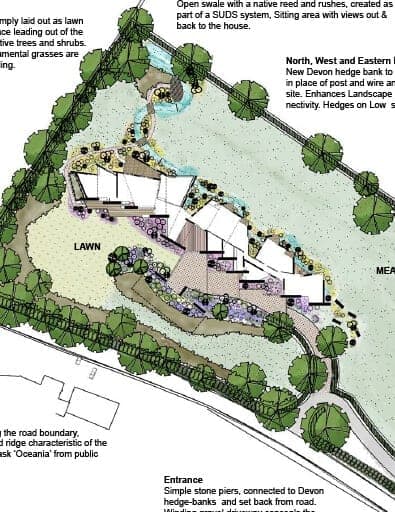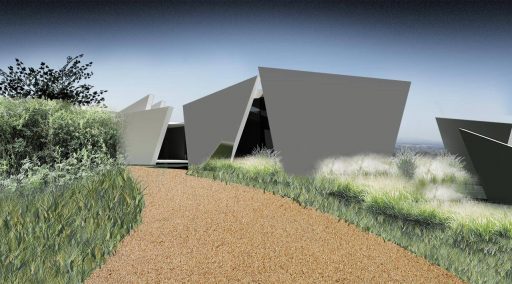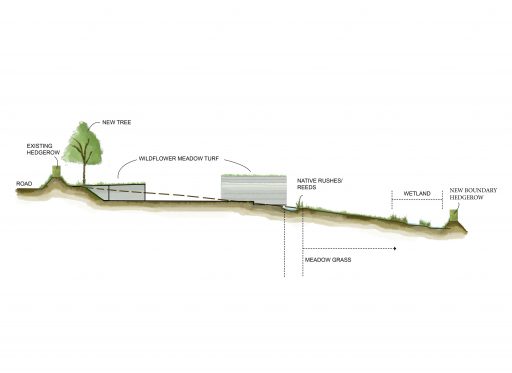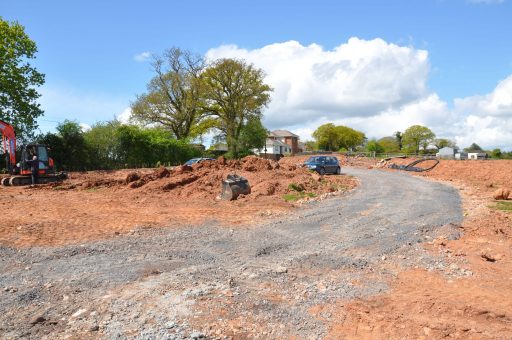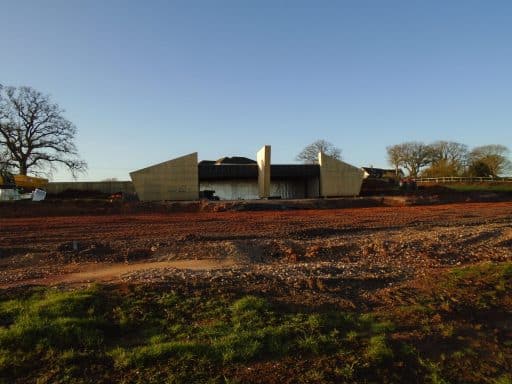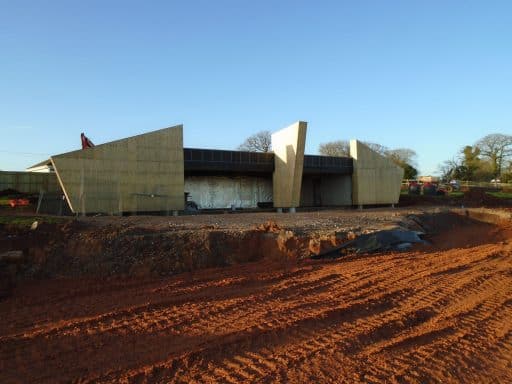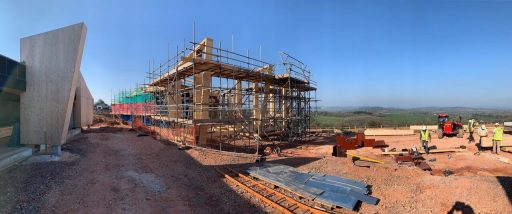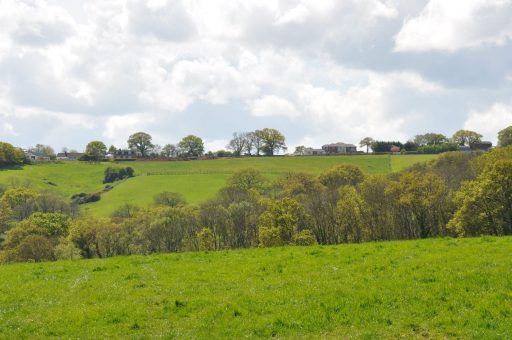
Hux Shard
Location: Para 79 Home, Pinhoe, Devon
Services: Landscape assessment and planning
Status: Completion due Mid-2019
POI: New-build house and garden with beneficial ecological impact
A collaborative project (working with Chagford-based architects, Squirrel Design, and Plymouth-based ecologist, Kate O’Neill) to create an exceptional, landscape-led ‘Para 79’ home and garden in the open countryside, near Exeter
The Para 79 amendment
Designed to prevent ‘urban sprawl’, specific laws are in place to prevent isolated new homes being built in the open countryside. This would have stopped the client’s project in its tracks before it had even begun. However, constraints on building new homes in the countryside were relaxed under Paragraph 79 of the National Planning Policy Framework back in 1997.
That important change means isolated, new-build homes can now be built in the open countryside, but only if “the design is of exceptional quality, in that it: – is truly outstanding or innovative, reflecting the highest standards in architecture, and would help to raise standards of design more generally in rural areas; and – would significantly enhance its immediate setting, and be sensitive to the defining characteristics of the local area.” (Source: MHCLG – National Planning Policy Framework, Feb 19)
Designed for diverse habitats
The overall design process was landscape-led, comprising a detailed site and contextual analysis with our Landscape Assessment. Being a semi-improved grassland field with post and rail fencing to its boundaries, the existing site was fairly unremarkable – largely devoid of ecological value with few redeeming features.
With our proposed landscape enhancements, there would be a moderate to major beneficial impact on the site’s ecological value, despite the presence of a new dwelling. This included a diversity of new and valuable habitats comprising Devon hedgebanks, open swales and wetland, species-rich grassland, native tufted grassland, native tree and shrub planting, grass roofs, new roosting and nesting opportunities for bats, birds and hedgehogs.
Wetland wildlife support
A key part to our proposals is the sustainable drainage strategy (SUDS) that will be employed to deal with surface rainwater and greywater (50-80% of a household’s wastewater from baths/showers, washing machines, dishwashers and sinks).
Both surface and greywater at Hux Shard will be used to create a significant wetland landscape feature on the site. Water will pass through a sinuous drainage swale that weaves through the garden culminating in a pond at the site lowest point. The damp conditions created by the water will support a diverse variety of flora and fauna, allowing a range of marginal aquatic and bog plants to thrive, while attracting a host of insect and other wildlife.
With planning consent granted in 2017, construction began in mid-2018 and completion is expected in Mid-2019.

